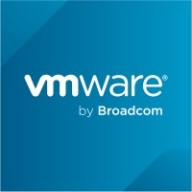

OpenText Cloud Service Automation and VMware Aria Automation compete in the cloud automation solutions category. VMware Aria Automation is the preferred option due to its robust feature set, despite OpenText's advantages in pricing and customer service satisfaction.
Features: OpenText Cloud Service Automation excels in integration capabilities, flexible automation, and customizable workflows. VMware Aria Automation stands out with broad platform support, advanced analytics, and a comprehensive feature set offering more tools and functionalities.
Room for Improvement: OpenText could improve its feature comprehensiveness and reduce technical expertise required for advanced setups. VMware might enhance its deployment process to make it less complex and reduce the requirement for initial technical expertise.
Ease of Deployment and Customer Service: OpenText Cloud Service Automation offers a straightforward deployment process with extensive support, resulting in fewer implementation challenges and better customer service ratings. VMware Aria Automation provides depth in technical support, which can be advantageous in complex environments, although it may require more expertise during deployment.
Pricing and ROI: OpenText Cloud Service Automation offers competitive pricing with lower upfront costs, appealing for budget-conscious businesses. It also ensures a quick ROI due to efficient deployment. VMware Aria Automation, despite higher initial costs, justifies the price with long-term savings through resource optimization and feature richness.
| Product | Market Share (%) |
|---|---|
| VMware Aria Automation | 9.5% |
| OpenText Cloud Service Automation | 0.7% |
| Other | 89.8% |


| Company Size | Count |
|---|---|
| Small Business | 1 |
| Large Enterprise | 6 |
| Company Size | Count |
|---|---|
| Small Business | 32 |
| Midsize Enterprise | 24 |
| Large Enterprise | 130 |
OpenText Cloud Service Automation provides open, heterogeneous, extensible enterprise-grade cloud service lifecycle management to design and orchestrate full stack services. CSA embraces existing automation assets with an enhanced orchestration engine, which provides IT with an informed, transparent delivery of secure compliant services for the hybrid cloud.
VMware Aria Automation is a cloud management tool that allows companies to simplify their cloud experience through a modern automation platform. The solution is designed to deliver self-service clouds, multi-cloud automation with governance, and DevOps-based security and infrastructure management. It helps organizations improve IT agility, efficiency, and productivity through its various features.
VMware Aria Automation has multiple use cases that include the following:
VMware Aria Automation Features
VMware Aria Automation has various features that allow users to easily perform operations. Some of the solution's capacities include:
VMware Aria Automation Benefits
VMware Aria Automation offers its users various benefits. Some of the biggest advantages that the solution brings to companies that utilize it include:
Reviews from Real Users
Awais J., CTO/CEO at a tech services company, likes VMware Aria Automation because it saves a lot of time, provides more visibility, and has extensive automation capabilities.
An IT consultant at a government rates VMware Aria Automation highly because the product gives you flexibility to analyze and consume resources.
We monitor all Cloud Management reviews to prevent fraudulent reviews and keep review quality high. We do not post reviews by company employees or direct competitors. We validate each review for authenticity via cross-reference with LinkedIn, and personal follow-up with the reviewer when necessary.